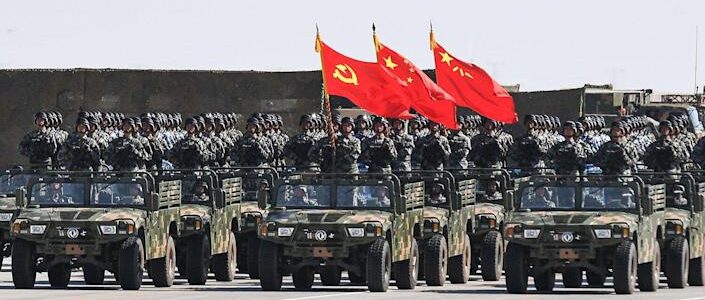
The Department of Defense on Wednesday submitted its annual report to Congress assessing China’s “current and probable future course of military-technological development” and outlining their view of the country’s goals and capabilities, including the likely possession of “700 deliverable nuclear warheads by 2027 and 1000 warheads by 2030.”
In addition, the report states that China has possibly already established a “nuclear triad” with the ability to launch nuclear weapons by air, land and sea.

China’s overall strategy is to achieve what it calls “the great rejuvenation of the Chinese nation” by 2049, according to the Defense Department’s view. The goal is to “match or surpass U.S. global influence and power, displace U.S. alliances and security partnerships” and to revise the current international order to their advantage, in their interests and to the benefit of Beijing’s authoritarian system, according to the report.
The report includes estimates for the size of China’s armed forces, including approximately two million personnel across all branches and 975,000 active-duty troops in combat units of the People’s Liberation Army. China’s navy is the world’s largest, the report says, with more than 335 ships and submarines. The Chinese air force and navy aviation units have a combined 2,800 total aircraft, making it the world’s third-largest fleet.

The Chinese also attempt to exert influence through other means, including digital strategies, the Defense Department told Congress. The “Three Warfares” concept is described as “psychological warfare, public opinion warfare, and legal warfare.”
In recent years the U.S., the world’s sole superpower since the end of the Cold War, has reoriented its foreign policy around China’s increasing economic and geopolitical influence. While the two countries are not overt enemies, they have a rivalrous relationship with many points of difference.
President Joe Biden has cast it as a “race” between American democracy and Chinese autocracy.
At the Aspen Security Forum in Washington on Wednesday, top U.S. military leader, Army Gen. Mark A. Milley, chairman of the Joint Chiefs of Staff, said China’s economic gains in the past four decades have help the country invest in its military and made it the “No. 1” military challenge to the U.S.
“Forty years ago, it was a very large infantry that was peasant-based and mostly army,” Milley said. “Today, it has capabilities in space, cyber, on land, sea, air, underseas.”

STR/AFP via Getty
Furthermore, Milley said that the rise of China complicates America’s approach to the rest of the world. Unlike the days of a bipolar Cold War between the U.S. and the Soviet Union, “we are entering a tripolar war with the United States, Russia and China,” Milley said. “We are entering into a world that is potentially much more strategically unstable.”
The U.S., Russia and China must be “very, very careful” in how the countries deal with each other, he added.
After China tested its new hypersonic missiles earlier this year, surprising American officials, Milley said it was a “very significant technological event” that “has all of our attention.”
On Wednesday, he explained what the hypersonic missile technology, when combined with the rest of China’s extensive military capabilities, means for the U.S. and the world.
“We are witnessing one of the largest shifts in global geo-strategic power that the world has witnessed,” he said.
Credit: Yahoo News
